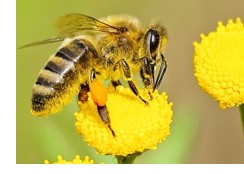
Have you ever wondered what you should you do if your furry friend is stung by a bee or a wasp?
In most cases, there will be some swelling and tenderness at the sting site. It’s best to try to remove the tiny stinger as quickly as possible (although they can be hard to see). Apply a cold compress (damp towel) to reduce swelling.
When do I need to seek veterinary advice?
Pets that are licking the sting area constantly, are in pain (limping is common if stung on the paw), or are a bit lethargic should be seen by us as soon as possible. We may need to give your pet an antihistamine and/or pain relief injection.
When does my pet need urgent emergency care?
It is rare but some dogs and cats are severely allergic to bee stings. They may go into anaphylactic shock (and even die) if they don’t receive immediate veterinary attention.
Seek veterinary advice immediately if your pet:
– Is having trouble breathing
– Is vomiting within 5-10 minutes post sting
– Has pale coloured gums
– Collapses
To help prevent bee stings, keep your pet away from flowering trees and plants (especially the ground cover). Always discourage your pet from playing with or chasing bees. Also remove any rotting fallen fruit from your garden, meat products, and uneaten pet food as these are all attractive to European wasps.
If you are worried about your pet you can always phone us on 5576 0400 for advice.

